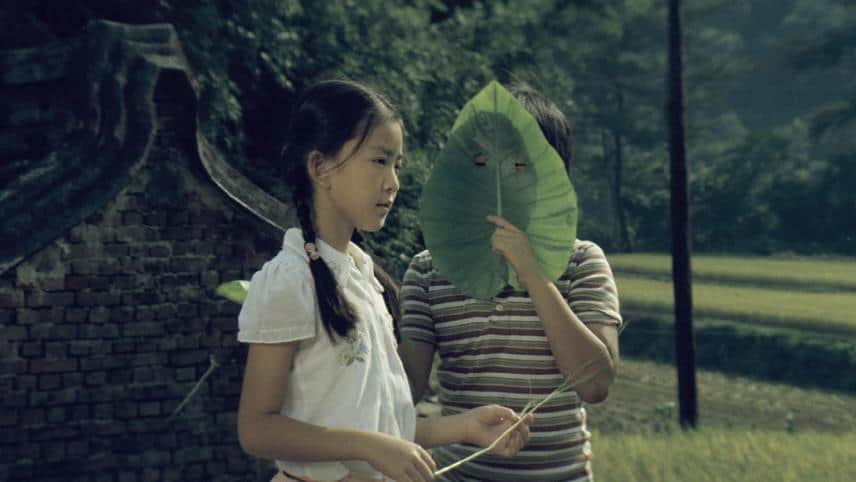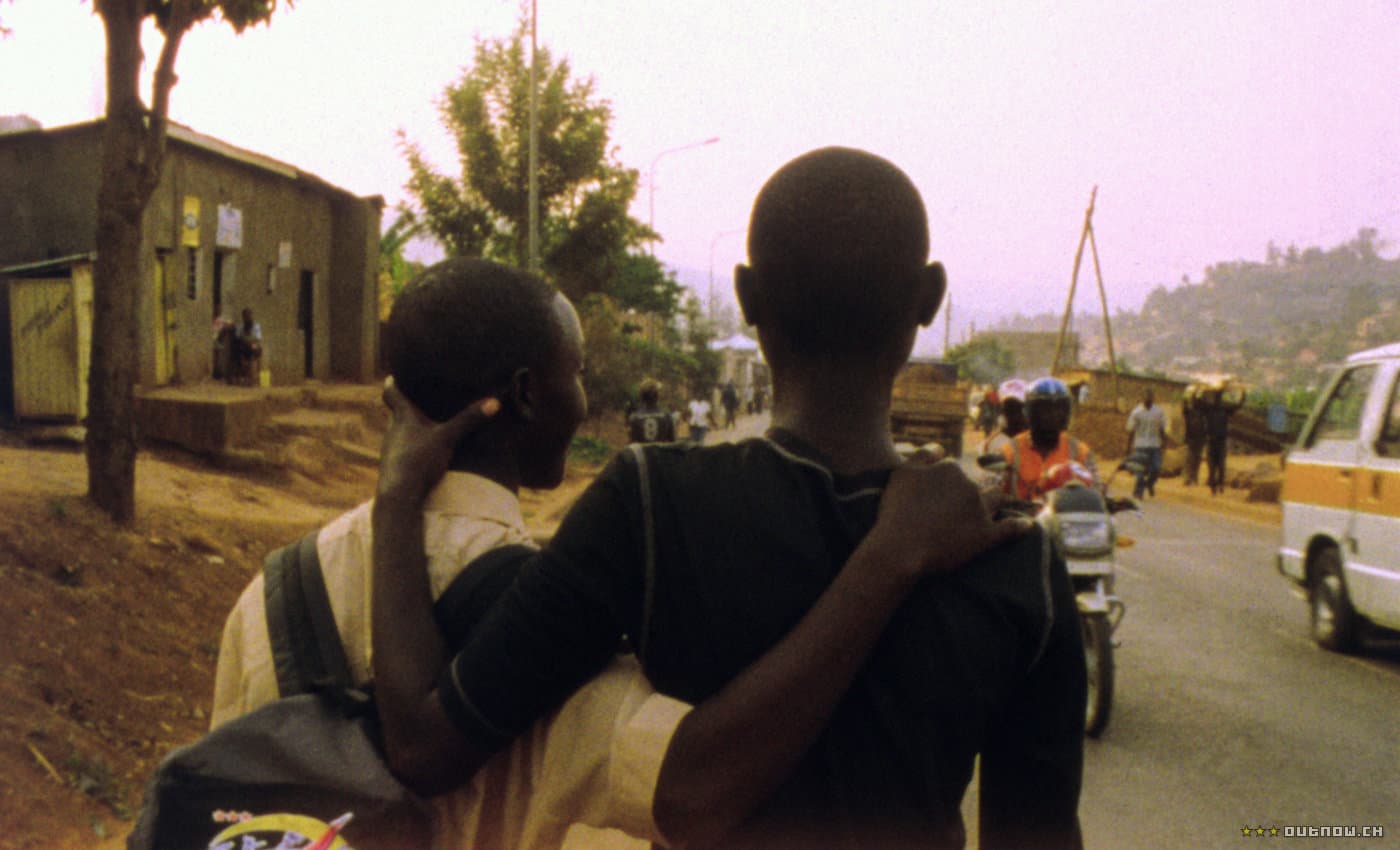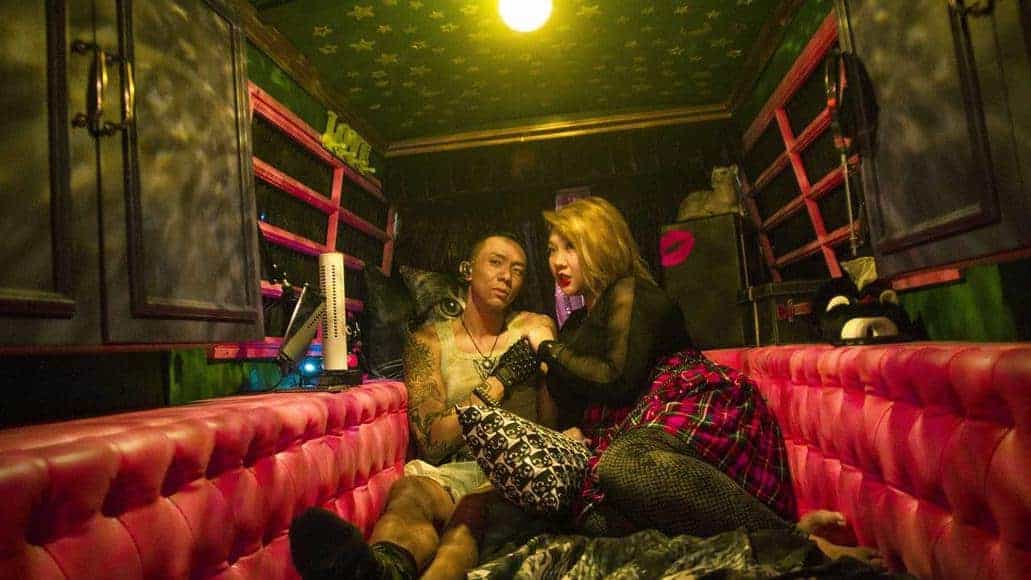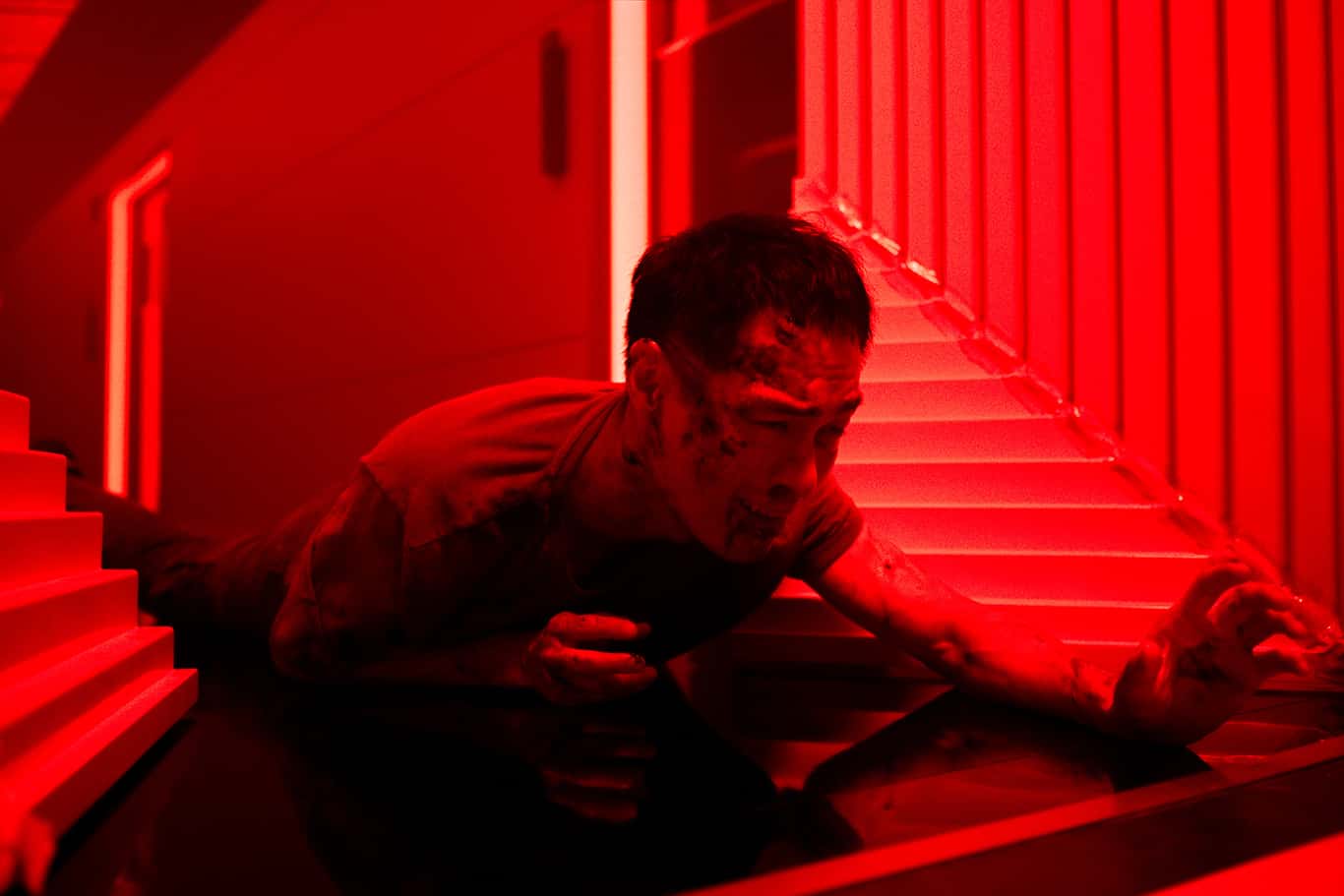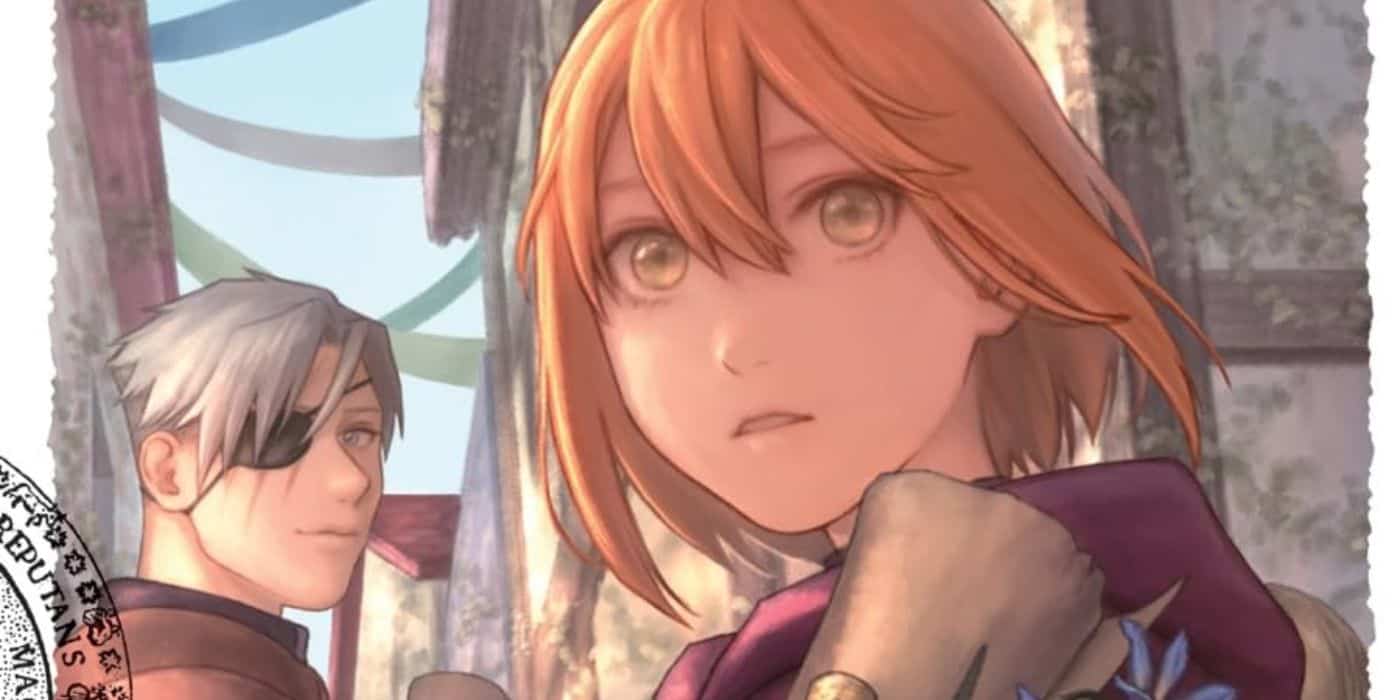The ever excellent Arrow Video have released “Pulse” in a duel format package, and it is available now! As this is an Arrow Video release, you'll be guaranteed a top of the range transfer, in High Definition, intriguing extras and a special collector's booklet; available with the first pressing of the release. Arrow Video's high quality releases speak for themselves, so on with the film!
Buy This Title
“Pulse” is an uncanny J-Horror film from 2001 exploring alienation and the accelerating pace of technological change, a ghostly incursion and an existential apocalypse. The late 1990s and the early noughties were a boom time in Japanese Horror, with fresh ideas woven around modern technology, curses, vengeful ghosts, sordid buildings or melodramas of extreme violence. Chilling entertainments like “The Ring”, “The Grudge”, “Dark Water” and “Audition” were all the rage.
Kiyoshi Kurosawa, the writer and director, created an uncanny and despairing addition to the J-Horror scene, with “Pulse”. This is an unusual film that outstrips most other horror ones, with an all-out apocalypse. Unlike most apocalyptic movies, this is a slow icy drop into dread; not raging monsters, a devastating virus, vampire plagues or zombie infestation, but the empty pit of human nature! This is a pessimistic film to say the least, but the protagonists are caring human beings. They are all equally as trapped in the lonely nature of technological acceleration, isolation, and the lack of any deep empathetic human interaction. People interact, but only in a superficial manner, due to the urban dislocation of their environment or the technological ‘at arm's length' version of social behaviour. “Pulse” is a film in which The Living and bizarrely, The Dead, have to face existential dread, head on. Modern technology is the conduit for this slow dive into utter despair. Though Kiyoshi Kurosawa directs a very bleak film, there are flashes of everyday dry humour, to keep the narrative moving along. Witty moments of respite before the final fall!
“Pulse” is a film in that unique genre experience, the weird or the uncanny. It is not an out and out gory horror, though there are scary thrills aplenty, while the final outcome is spectacularly apocalyptic. “Pulse” is a meditation on loneliness that falls completely off the cliff! The strange disorientating feel of the modern urban landscape, all concrete, fire escapes and dingy corridors, augments the creepy feel. All the protagonists wear bright and breezy clothes, as if to ward off this urban gloom. There are moments of green respite as plants and flora try to repel the shadows, but as the film progresses, more and more of the plants seem to be covered over!
A slow unfolding feeling of fear envelopes this film triumphantly. As cinematic experiences go, “Pulse” has the feeling of a Thomas Ligotti short story, where the atmosphere of the uncanny and a sense of dislocated place are powerful.
The film's story revolves around two narratives, until they collide. The story featuring the economics student Ryosuke Kawashima (Haruhiko Kato) is interesting, as it seems that he stumbles into a another narrative, when he meets Harue Karasawa and her fellow post-graduate computer students. She takes an interest in his seemingly minor internet problem, but as this narrative develops, the computer science post-graduates have already been noticing strange happenings. One of their programmed simulations of human interaction behaves oddly too.

The Ingénue
The film starts with the sound of dial up internet tones, transforming into the waves of the sea. A ship is on a choppy sea, grey sky all around. A young woman looks out to sea, a phone is ringing. Broken and distorted sepia stained frazzled images burst into view, of an eerie computer workstation in an apartment. The image flickers and bends with unsettling sounds buzzing!
The main narrative is that of Michi Kudo, Junko Sasano, Toshio Yabe and Taguchi, who work at a plant nursery. The brightly dressed Michi Kudo is worried that Taguchi hasn't been at work for a few days and he is not picking up his phone. She decides to call round to see him, to make sure he is okay. Michi takes the most desolate bus ride in the history of cinema, with film footage rolling in the background, old school style. This is a nice touch by Kiyoshi Kurosawa, spookily shot by the cinematographer Junichiro Hayashi; the unreal nature of the footage creates claustrophobia, as this sweet pretty girl starts to feel the tension. She reaches the dowdy apartment, surrounded by concrete slabs for buildings, metal stairs and fire escapes that stretch out into infinity, and it is a dull day! Michi scrabbles around, looking for a key under a plant pot, as no one is answering the door. She lets herself in and starts looking for the disc, it is the creepy workstation! In the background, a shadow moves! It is Taguchi and he is at home. He hasn't answered the phone, opened the door or gone to work. He is in dishevelled state but politely tells Michi where the disc should be, as he casually picks up some cables and walks into the back room. Michi finds the disc, but Taguchi is nowhere to be seen. She goes looking for him and screams in horror! He's walked into one of the back rooms and casually hanged himself, with the computer cable he picked up! The look of pale nothingness on Taguchi's dead face is particularly unsettling.
After Michi recovers from the shock of her friend's death, the plant nursery workers gather to contemplate the nature of his death. They decide to look at the computer disc he has been working on. It is just an image of Taguchi staring into one of the computer screens, seeing his reflection going off into infinity. When they enlarge the image of the other computer monitor, there is a fuzzy but extremely spine-chilling face staring out!
Dial-Up Internet
In a messy apartment, student layabout Ryosuke Kawashima decides it's time to try out the new-fangled technology. It is the new media sensation, the dial-up internet! He's attempting to set up his internet service provider. This is a witty scene, as any technophobe will know; setting up anything computer related can be a disaster and very confusing. He messes around, tapping away on the keyboard, reading instructions, with pop ups on his windows irritating him with error messages. He decides to give up and he chills out. The dial-up tones suddenly kick into action. The explosion of popular internet dial-up server providers gained more popularity in the mid to late 1990s, so this amusing scene, seems nostalgic nowadays, but describes the frustrations of any technophobe. Unfortunately, his victory in getting a dial-up tone leads to a series of bizarre live video feeds. Footage of shadowy rooms is beamed onto his monitor screen, unknown people distracted in a series of distressed poses and despairing visages. Finally the screen asks, ‘Do you want to meet a ghost?' This freaks Ryosuke out, so he switches it off and has a cigarette! All the freaky, grainy footage, with muted colour tones, is enclosing and genuinely uncanny with random people in desolate extremis. The screen message is a true thrill to that chill moment. Ryosuke has a lazy snooze, putting the strange stuff behind him, but the dial-up starts up again. He turns over on his bed and notices the screen has a new video feed. A person is in a room with a black bag over their head! Ryosuke needs a drink after seeing that!
He decides to hang around the Computer Science department at the University, trying to figure what is up with his dial-up internet, asking a few intense computer students about his ghostly website. He doesn't get far until a fine looking post-graduate computer science student, Harue Karasawa, takes an interest in his problem. She wonders what the web address could be to this strange website! She is amused that Ryosuke is a technophobe, so she gives him advice on how to bookmark a website. He takes detailed notes, so he can try figure out what is going on later. The director focuses on Ryosuke taking his notes, as he hasn't a clue, demonstrating the director's dry wit.
Help Me!
Toshio Yabe is at the plant nursery working when he receives a strange phone call with someone saying ‘help' repeatedly over the phone, in a cold voice. He asks who is speaking and sees an ominous picture of Taguchi's workstation on his phone, with a mysterious figure standing in the picture. Toshio takes the empty bus ride of doom to Taguchi's apartment. He walks up a labyrinth of metal stairs and searches around the apartment and finds a computer printout saying ‘The Forbidden Room'. He sees an ash like stain on the wall where Taguchi committed suicide. If this is not disturbing enough, he walks away and then comes back to see Taguchi standing there. Toshio asks what has happened, but Taguchi flickers back to ash. Toshio decides his mind is playing tricks, so he leaves, and walks away from the apartment block. As he is walking, he notices an apartment with the door's edges all sealed up in red tape. In this concrete paradise, where no one seems to be around, curiosity gets the better of Toshio Yabe.
He unseals the red tape and enters the room, and descends the stairs of this concrete bunker-like apartment. There is an alcove with a chic leather sofa and the wall is covered with red graffiti. He turns around and meets an incarnation of pure dread, a shade of a well-dressed woman shimmering grey. She is a spectre from the other side, blurry and distorted as she walks towards Toshio, the ghost even stumbles. He tries to hide behind the sofa, but he has to look into the cold fish stare of pure emptiness of this ghost, a young woman! This scene is creepy-tastic, a real shiver down the spine moment. Initially, the concrete apartment is brightly lit, but grey like muted tones descend when the ghost appears. The whole scene is crafted in an awkward slow-motion, which ramps up the temperature of terror!
Kiyoshi Kurosawa, Junichiro Hayashi and art director Tomoyuki Maruo devise a superb scene of ghostly goings on! Masatoshi Matsuo, who portrays Toshio, superbly acts this scene, with emotions transmuting from curiosity, to confusion, to pure shock and terror, as he locks eyes with the ghost. The physically peculiar and awkward acting by the actress, who plays the shade, is very effective. The fuzzy and greyscale visual effect of the ghost enhances the bizarre and scary experience. Creepy is the ultimate word to describe all the uncanny scenes in this enigmatic film.
Michi and Junko, the two pretty plant nursery ingénues, are worried about Toshio Yabe, but Junko doesn't want Michi to check on him. The weird atmosphere is starting to shred Junko's nerves, and she wants to pretend everything is normal. Toshio arrives, he is still alive, but he's in no mood to speak to anyone. He sweeps past the girls and disappears into the office, leaving Junko worried and angry.
Michi is walking among dreary apartments and work office units, when a woman leaves a shabby run down business/office unit, with a random white chair next to the door. She shuts the door and starts to seal the door up with red tape! Dull grey concrete soul sapping structures tower around. Michi watches on curiously.
The Untidy Technophobe
Ryosuke is in an arcade, people are around, but he's on his own, wasting coin. He goes for a solitary walk, smoking in a twilight urban landscape. He returns to his apartment and flicks through some magazines. Ryosuke is an amiably enough young man, but he seems to have no friends. Even when he tries to ring someone, there is no answer. He flicks through magazines for something to do. He's a young man going through the motions. He's not glum, despairing or miserable, just bored with his loneliness. As he goes off to pour himself a drink, then the computer fires itself up again!
It is time for some bizarre juju to go down. He rummages for his notes on how to bookmark these strange internet video feeds. There is a figure slumped in a chair, wearing in a red t-shirt, with graffiti on the wall. The figure is sat motionless, shadow covering the face. Pops ups and error messages fly across the screen as he tries to bookmark the video stream. The figure continues to sit motionless. Amusingly, Ryosuke reads his notes attentively even though there are weird things going on. The figure starts to move forward and sideward into view, jerking and blurry, some sort of bag on its head. Ryosuke looks at the screen. The figure absurdly comes into view from the opposite side. The screen has lost is all its colour tone, it is blurry grey. The figure is about to unmask itself when Ryosuke has had enough and switches off the screen. He pulls out all the cables from the computer. The more confused Ryosuke becomes the scarier and more disquieting the scene develops. The juxtaposition between Ryosuke's computer amateurism and the chilling monitor video feeds is absurd, funny and very spooky. The musical soundscape creates extra ice!
Ryosuke walks around the Computer Science lab at theUniversity, all glass and monitors. He finds a monitor with lots of varying sized dots and blobs swirling around. The beautiful and fashionably stylish Harue Karasawa comes into the lab, busy with her clipboard. She notices Ryosuke and asks how it went with her instructions. He followed her advice, but he's not sure if anything worked. To his surprise Harue says she'll call round to look over his computer, if he'll wait a minute. Kiyoshi Kurosawa directs her naturalistically, going about her day to day business, being busy. Kurosawa likes to direct his characters through their day to day tasks, emphasizing busyness as an affectation. It is used as a shield to avoid depth of thought and deeper emotions. Ryosuke has another look at the blobs on the computer screen and he asks what it is. She explains that if two dots get too close, they die, but if they get too far apart, they draw closer together. It is supposed to be a miniature model of the human world, but only the graduate student who programmed it, understands it. This is a pessimistic model of human interaction. She warns him not to stare at it for too long, hinting at something more troubling bubbling under Harue's professionalism.
They go back to Ryosuke's small apartment, for another sharp scene, with gentle visual humour playing alongside their melancholy conversation. Ryosuke is slightly appalled that he has a beautiful woman in his messy apartment. He pours her a soft drink, a simple token of affection. He is enjoying real human interaction for once. As she messes around on his computer, he slyly tries to tidy his room, which is genuinely humorous. In nostalgic old school computer style, she gets a floppy disc to record the data she needs. She asks why he started with the internet, wondering if he wants to connect with people, even though he's a technophobe. He's not sure why, he reckons he's just fallowing the fashion. He continues to tidy his room. Through their interaction, Harue relaxes and she is more unguarded in conversation. Harue is a pessimist, having her own existential crisis. She thinks people don't really connect, so the internet is a sham. She considers human interaction is like the computer simulation at the lab, so perhaps she is the author of the programme after all!
Harue We all live totally separately
That's it how it seems to me
Ryosuke finally receives some positive human interaction, but this stylish young woman is suffering from existentially angst, a clever irony from the Kiyoshi Kurosawa. Ryosuke is baffled!






